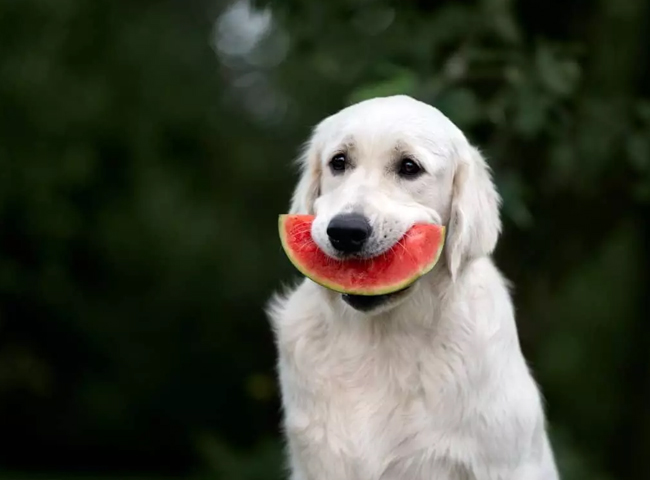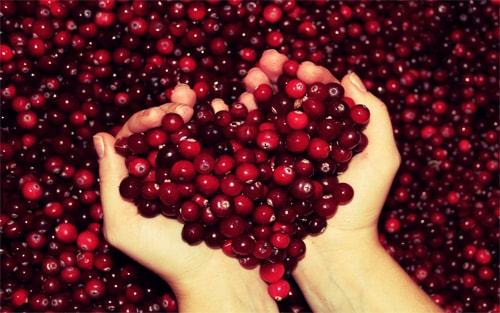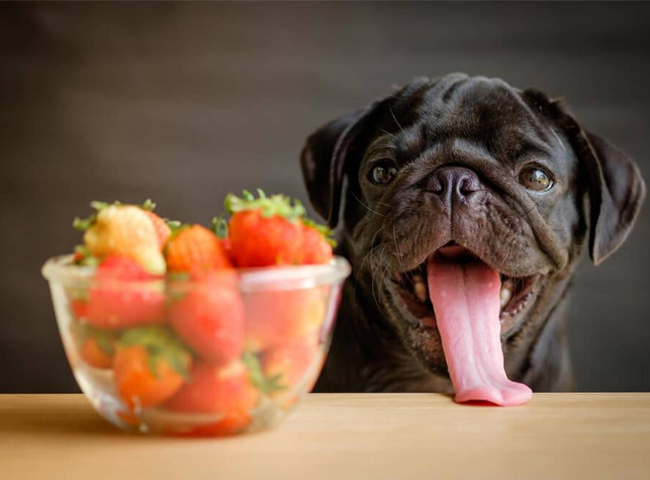8 FRUITS THAT DOGS CAN EAT
You already know that fruit is very important for good health, but did you know it is also good for your dog? While dogs don't need fruit to stay in their best health, adding fresh fruit to your puppy's normal diet, with your veterinarian's permission and guidance, can provide them with extra vitamins, minerals and antioxidants, as well as always provide them with enough water.

However, it's important to remember when feeding your dog fruit that while many fruits are great for dogs, not all are. In addition to looking at the list of fruits you shouldn't feed your furry friend at the bottom of this page, you should also pay attention to your dog's reaction to certain fruits. If you see an upset stomach or other signs of discomfort, don't feed them fruit again - even if it's safe for them.
Here are the 8 best fruits to feed your dog
Apple
An apple a day probably won't put a vet off interest, but apple slices or other small pieces are a great snack and meal. Make sure not to give your dog apple seeds as they contain small amounts of cyanide and can also pose a choking hazard. First
Benefit:
Helps clean teeth and freshen breath.
High in vitamin A, vitamin C, and fiber, skin also contains phytochemicals that have been found in laboratory studies to fight cancer cell growth.
Banana

Bananas have many health benefits for our furry friends. They're also very portable, so they're a great snack for the two of you to enjoy hiking together.
Benefit:
The fiber in bananas can be good for your dog's digestion.
Contains lots of potassium, fiber and vitamin C.
Blackberries

It's safe to share raspberries with your dog, but use your best judgment to cut them into small pieces. Eat sweeter raspberries instead of the sour ones your dog may prefer.
Benefit:
May have antibacterial properties that support good oral health.
Contains Vitamins C and K, Manganese, and Fiber.
Blueberries

Dogs tend to like blueberries, and blueberries are already a perfect size for treats with large and small mouths. However, if you are working with a puppy or a large blueberry, cut the berries in half before serving.
Benefit:
Low in sugar and fat, blueberries are a great treat for dogs who need to avoid too many calories.
Contains vitamins C and K, as well as calcium, magnesium, zinc, iron, and antioxidants.
Watermelon

Cantaloupe is a safe and healthy fruit for your dog to enjoy, but avoid giving your dog the rind, as the rough texture can cause intestinal damage.
Benefit:
High doses of beta-carotene are beneficial for a dog's eyesight and immune system. sixty-seven
Contains vitamins A, B-6, and C, as well as fiber, potassium, folic acid, and niacin.
Cranberry tree

Thanksgiving isn't the only reason to stock up on these sweet treats at home. Cranberries can be eaten raw, cooked, or dried for dogs, but don't eat sugary cranberry sauce (sorry, Fido).
Benefit:
Cranberries are rich in antioxidants.
Contains vitamins C and E, as well as a host of B vitamins, including thiamine, niacin, riboflavin, and B-6.
Papaya

Continue to feed the puppy papaya. The pulp of this exotic fruit is a great snack.
Benefit:
Contains vitamins A, C, E, and K, and folic acid.
Rich in fiber, calcium, and potassium.
Strawberry

Like most other berries, strawberries are rich in antioxidants. For safe feeding, first cut off the top leaves, then quarter the strawberries. If your dog is small, cut each quarter (or smaller) in half.
Benefit:
Strawberries contain high levels of antioxidants that can boost the immune system. They also have a high moisture content, making them a nutritious snack.
Contains vitamins C, B-6, K, and E, as well as folic acid, potassium, and manganese.
Fruits You Shouldn't Feed Your Dog
While the list of fruits your dog can eat is long, as a responsible pet parent you should also be aware of the fruits your dog can't. eat. Including:
Cherry
Grapefruit
Grape
Lemon
Lime
Plum
Always keep safety in mind when feeding your dog any fruit for the first time. Even fruits not on this list can cause problems for your particular dog, so do your research, feed only small amounts at first, and watch for signs of effects. side use.
How to feed your dog fruit
Fresh or frozen fruit is easy for your pet to eat, as long as you remove the peel, seeds, and pitting, and cut the fruit into bite-sized pieces. But you can be more creative if you want.
Freeze some ice cream popsicles. Fill each slot in the ice cube tray with fresh water or a tablespoon of plain yogurt, then add the chopped pieces of fruit and freeze. Peel off one of the popsicles for an icy treat on a warm day.
Make smoothies. Start with the basics, such as water, plain yogurt, beef, chicken, or vegetable broth (if you're using a store-bought broth, check the ingredients list first to make sure no onions, garlic, or other prohibited foods). Mix with fresh or frozen fruit and serve immediately. If you're making a large portion, freeze the rest in an ice cube tray for quick freezing.
Encourage your dog to play with its food. Trade the traditional treats in your dog's favorite educational toy for small pieces of fruit. They get a healthy snack and plenty of mental exercises.
Sprinkle fruit on meals. Use chopped fruit as a garnish in your dog's usual breakfast or dinner to add some fun to mealtimes. It's a great way to mix up meals and add an extra dose to your health.
Of course, fruit isn't the only delicious human food that dogs can eat. Learn about the benefits of feeding your puppy vegetables.


Post a Comment